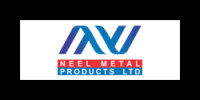
i
Prochem Turnkey Projects
Filter interviews by
Prochem Turnkey Projects Interview Questions, Process, and Tips
Prochem Turnkey Projects Interview Experiences
4 interviews found
I applied via Referral and was interviewed in Jul 2023. There were 2 interview rounds.

(2 Questions)
- Q1. GD&T, future plans, projects done, SPM knowledge, bearing selection, Motor selection
- Q2. Sheet metal, welding symbols, software knowledge
Design Engineer Interview Questions asked at other Companies
I applied via Referral and was interviewed before Jan 2022. There was 1 interview round.
(2 Questions)
- Q1. What are the basic guidelines for sheet metal fabrication?
- Ans.
Basic guidelines for sheet metal fabrication include material selection, design considerations, and proper tooling and equipment.
Choose the appropriate material for the desired application, considering factors such as strength, corrosion resistance, and cost.
Design the sheet metal part with proper dimensions, tolerances, and features to ensure manufacturability and functionality.
Consider bend radius, hole sizes, and ed...
- Q2. What Are Commonly Used Sheet-metal Assembly Process?
- Ans.
Commonly used sheet-metal assembly processes include welding, riveting, and adhesive bonding.
Welding: Joining metal parts by melting and fusing them together, commonly used methods include spot welding, TIG welding, and MIG welding.
Riveting: Joining metal parts using mechanical fasteners called rivets, which are inserted through holes and then deformed to hold the parts together.
Adhesive bonding: Joining metal parts us...
Interview Preparation Tips
Production Engineer Interview Questions asked at other Companies
Interview Questionnaire
1 Question
- Q1. Single button start stop ladder logic, lamp flasher logic, star delta power and control wiring, pneumatics, VFD terminals and its programming, AUTOCAD proficiency,
Project Engineer Interview Questions asked at other Companies
I applied via Referral and was interviewed before Jan 2019. There were 5 interview rounds.
Interview Questionnaire
4 Questions
- Q1. What is the heat chart?
- Q2. How many inches is equal to 400NB?
- Q3. What QAP?
- Q4. What is 2062?
Interview Preparation Tips
Prochem Turnkey Projects interview questions for popular designations
Top trending discussions






Interview questions from similar companies

I applied via LinkedIn and was interviewed in Jul 2020. There were 3 interview rounds.
Interview Questionnaire
1 Question
- Q1. Mostly about Hydraulics & Engineering basics
Interview Preparation Tips
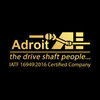
Senior Engineer Interview Questions & Answers
Adroit Industries Indiaposted on 22 Jan 2024
I applied via Recruitment Consulltant
(2 Questions)
- Q1. Cnc machine related questions
- Q2. Process planning questions
(1 Question)
- Q1. Qualification, address, family members
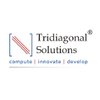
Software Engineer Interview Questions & Answers
Tridiagonal Solutionsposted on 28 Oct 2023
I applied via Referral and was interviewed before Oct 2022. There were 3 interview rounds.

Coding test over phone call. Interviewer would ask questions, we have to come up with logic/ pseudo code
(1 Question)
- Q1. Object oriented programming concepts.
Interview Preparation Tips
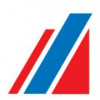
Senior Accounts Executive Interview Questions & Answers
KHS INNOVATION AND ENGINEERING LLPposted on 6 Apr 2021
I applied via Recruitment Consultant and was interviewed before Apr 2020. There was 1 interview round.
Interview Questionnaire
1 Question
- Q1. Experience

I applied via Recruitment Consultant and was interviewed in Sep 2020. There were 3 interview rounds.
Interview Questionnaire
2 Questions
- Q1. About cnc turning settup
- Q2. No questions only practical
Interview Preparation Tips

Interview Questionnaire
1 Question
- Q1. Types of gauges
- Ans.
Gauges are instruments used to measure various parameters. There are different types of gauges for different applications.
Mechanical gauges - measure physical dimensions like length, thickness, etc.
Electrical gauges - measure electrical parameters like voltage, current, resistance, etc.
Pressure gauges - measure pressure of fluids and gases
Temperature gauges - measure temperature of liquids and gases
Flow gauges - measur...
Prochem Turnkey Projects Interview FAQs
Tell us how to improve this page.
Interview Questions for Popular Designations
Prochem Turnkey Projects Interview Process
based on 3 interviews
Interview experience
Interview Questions from Similar Companies
Prochem Turnkey Projects Reviews and Ratings
based on 41 reviews
Rating in categories
|
Production Engineer
11
salaries
| ₹2.1 L/yr - ₹3.4 L/yr |
|
Project Engineer
10
salaries
| ₹3 L/yr - ₹3.7 L/yr |
|
Purchase Engineer
8
salaries
| ₹3.5 L/yr - ₹5.5 L/yr |
|
Design Engineer
6
salaries
| ₹3.5 L/yr - ₹11.8 L/yr |
|
Senior Project Engineer
5
salaries
| ₹4.9 L/yr - ₹6 L/yr |
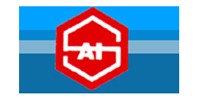
Super Auto India

MELCO

Ferromatik Milacron

Devgiri Forgings
- Home >
- Interviews >
- Prochem Turnkey Projects Interview Questions



